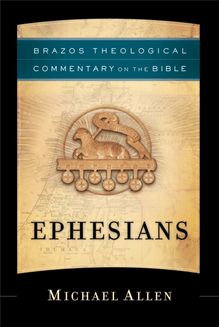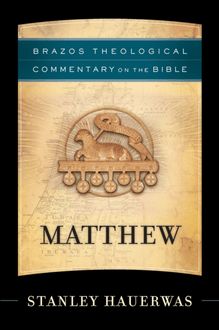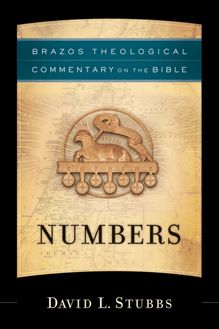Pastoral Epistles with Philemon & Jude (Brazos Theological Commentary on the Bible) , livre ebook
209
pages
English
Ebooks
2008
Vous pourrez modifier la taille du texte de cet ouvrage
Obtenez un accès à la bibliothèque pour le consulter en ligne En savoir plus
Découvre YouScribe en t'inscrivant gratuitement
Découvre YouScribe en t'inscrivant gratuitement
209
pages
English
Ebooks
2008
Vous pourrez modifier la taille du texte de cet ouvrage
Obtenez un accès à la bibliothèque pour le consulter en ligne En savoir plus
Publié par
Date de parution
01 octobre 2008
Nombre de lectures
3
EAN13
9781441235268
Langue
English
Poids de l'ouvrage
2 Mo
Publié par
Date de parution
01 octobre 2008
Nombre de lectures
3
EAN13
9781441235268
Langue
English
Poids de l'ouvrage
2 Mo
Brazos Theological Commentary on the Bible
Series Editors
R. R. Reno, General Editor
First Things
New York, New York
Robert W. Jenson (1930–2017)
Center of Theological Inquiry
Princeton, New Jersey
Robert Louis Wilken
University of Virginia
Charlottesville, Virginia
Ephraim Radner
Wycliffe College
Toronto, Ontario
Michael Root
Catholic University of America
Washington, DC
George Sumner
Episcopal Diocese of Dallas
Dallas, Texas
©2008 by Risto Saarinen
Published by Brazos Press a division of Baker Publishing Group P.O. Box 6287, Grand Rapids, MI 49516-6287 www.brazospress.com
Ebook edition created 2012
Ebook corrections 02.06.2020
All rights reserved. No part of this publication may be reproduced, stored in a retrieval system, or transmitted in any form or by any means—for example, electronic, photocopy, recording—without the prior written permission of the publisher. The only exception is brief quotations in printed reviews.
Library of Congress Cataloging-in-Publication Data is on file at the Library of Congress, Washington, DC.
ISBN 978-1-4412-3526-8
Scripture quotations are from the New Revised Standard Version of the Bible, copyright ©1989, by the Division of Christian Education of the National Council of the Churches of Christ in the United States of America. Used by permission. All rights reserved.
CONTENTS
Cover
Series Page
Title Page
Copyright Page
Series Preface
Author’s Preface
Abbreviations
Introduction to the Pastoral Epistles
First Timothy
Introductory Part (1 Tim. 1:1–20)
Apostolic Greeting (1 Tim. 1:1–2)
False Doctrines, Divine Economy, and Timothy’s Task (1 Tim. 1:3–7)
Law and Gospel, Doctrine and Conduct (1 Tim. 1:8–11)
Commission of Paul as Apostle (1 Tim. 1:12–17)
Admonition to Timothy (1 Tim. 1:18–20)
Worship, Life, and Order in the Church (1 Tim. 2:1–3:16)
Pray for Everyone: Christianity Is Universal (1 Tim. 2:1–7)
How Men and Women Should Behave (1 Tim. 2:8–15)
Excursus 1: 1 Timothy 2:15 in Reformation Theology
Requirements for a Bishop (1 Tim. 3:1–7)
Requirements for Deacons (1 Tim. 3:8–13)
Church of the Living God (1 Tim. 3:14–16)
Excursus 2: Ecclesiology and Ordained Ministry, Part 1
Instructions for the Pastoral Work of Timothy (1 Tim. 4:1–6:2)
False Teachers of Ascesis (1 Tim. 4:1–5)
Excursus 3: Hospitality and Gratitude
Value of Godliness (1 Tim. 4:6–11)
Conduct of the Church Leader (1 Tim. 4:12–5:2)
Dealing with Widows (1 Tim. 5:3–16)
Position of Elders in the Church (1 Tim. 5:17–20)
Instructions Concerning Right Judgment (1 Tim. 5:21–25)
Duties of Slaves (1 Tim. 6:1–2)
True and False Teachers (1 Tim. 6:3–21)
False Teachers Are Mentally Disturbed (1 Tim. 6:3–10)
Excursus 4: Chrysostom on Self-Control
Exemplary Life and Teaching (1 Tim. 6:11–16)
Instructions about Rich People (1 Tim. 6:17–19)
Excursus 5: Chrysostom on Generosity 113
Final Admonition to Timothy (1 Tim. 6:20–21)
Second Timothy
Opening of the Letter (2 Tim. 1:1–5)
Greeting (2 Tim. 1:1–2)
Thanksgiving (2 Tim. 1:3–5)
Witness and Suffering in the Footsteps of Paul (2 Tim. 1:6–2:13)
Gospel as Testimony and as Tradition (2 Tim. 1:6–14)
Excursus 6: Tradition
Good and Bad Examples (2 Tim. 1:15–18)
Exhortation to Be a Strong Witness (2 Tim. 2:1–7)
Promise of Salvation (2 Tim. 2:8–13)
False Teachers and Their Conduct (2 Tim. 2:14–3:9)
Right Conduct as Purification (2 Tim. 2:14–26)
Excursus 7: Ecclesiology and Ordained Ministry, Part 2
Folly of False Teachers (2 Tim. 3:1–9)
Concluding Advice to Timothy (2 Tim. 3:10–4:22)
Paul’s Example and Scriptures (2 Tim. 3:10–17)
Excursus 8: Scripture and Tradition
Final Words of the Apostle (2 Tim. 4:1–8)
Personal Communications (2 Tim. 4:9–18)
Final Greetings (2 Tim. 4:19–22)
Titus
Appointment of Elders in Crete (Titus 1:1–16)
Greeting (Titus 1:1–4)
Requirements for Elders and Bishops (Titus 1:5–9)
False Teachers Are Corrupted Liars (Titus 1:10–16)
Virtues among Christians (Titus 2:1–15)
Virtues of Older Men, Older Women, and Younger Women (Titus 2:1–5)
Virtues of Young Men, Titus, and Slaves (Titus 2:6–10)
Grace of God in Jesus Christ (Titus 2:11–15)
Excursus 9: Self-giving of Jesus
Good Works in the Society (Titus 3:1–15)
Christians as Good Citizens (Titus 3:1–3)
Saving Presence of God through Jesus Christ (Titus 3:4–7)
Dealing with Opponents (Titus 3:8–11)
Final Instructions and Greetings (Titus 3:12–15)
Philemon
Introduction to Philemon
Address and Expressions of Gratitude (Phlm. 1–7)
Appeal for Onesimus (Phlm. 8–21)
Travel Plans and Greetings (Phlm. 22–25)
Jude
Introduction to Jude
Jesus Christ
Christian Faith
Summary
After the Word: Hermeneutical Postscript
Appendix A: Moderation of Emotion
Appendix B: Mental Disorders
Appendix C: Varieties of Giving
Bibliography
Subject Index
Scripture Index
Notes
Back Cover
SERIES PREFACE
Near the beginning of his treatise against Gnostic interpretations of the Bible, Against the Heresies , Irenaeus observes that Scripture is like a great mosaic depicting a handsome king. It is as if we were owners of a villa in Gaul who had ordered a mosaic from Rome. It arrives, and the beautifully colored tiles need to be taken out of their packaging and put into proper order according to the plan of the artist. The difficulty, of course, is that Scripture provides us with the individual pieces, but the order and sequence of various elements are not obvious. The Bible does not come with instructions that would allow interpreters to simply place verses, episodes, images, and parables in order as a worker might follow a schematic drawing in assembling the pieces to depict the handsome king. The mosaic must be puzzled out. This is precisely the work of scriptural interpretation.
Origen has his own image to express the difficulty of working out the proper approach to reading the Bible. When preparing to offer a commentary on the Psalms he tells of a tradition handed down to him by his Hebrew teacher:
The Hebrew said that the whole divinely inspired Scripture may be likened, because of its obscurity, to many locked rooms in our house. By each room is placed a key, but not the one that corresponds to it, so that the keys are scattered about beside the rooms, none of them matching the room by which it is placed. It is a difficult task to find the keys and match them to the rooms that they can open. We therefore know the Scriptures that are obscure only by taking the points of departure for understanding them from another place because they have their interpretive principle scattered among them. [1]
As is the case for Irenaeus, scriptural interpretation is not purely local. The key in Genesis may best fit the door of Isaiah, which in turn opens up the meaning of Matthew. The mosaic must be put together with an eye toward the overall plan.
Irenaeus, Origen, and the great cloud of premodern biblical interpreters assumed that puzzling out the mosaic of Scripture must be a communal project. The Bible is vast, heterogeneous, full of confusing passages and obscure words, and difficult to understand. Only a fool would imagine that he or she could work out solutions alone. The way forward must rely upon a tradition of reading that Irenaeus reports has been passed on as the rule or canon of truth that functions as a confession of faith. “Anyone,” he says, “who keeps unchangeable in himself the rule of truth received through baptism will recognize the names and sayings and parables of the scriptures.” [2] Modern scholars debate the content of the rule on which Irenaeus relies and commends, not the least because the terms and formulations Irenaeus himself uses shift and slide. Nonetheless, Irenaeus assumes that there is a body of apostolic doctrine sustained by a tradition of teaching in the church. This doctrine provides the clarifying principles that guide exegetical judgment toward a coherent overall reading of Scripture as a unified witness. Doctrine, then, is the schematic drawing that will allow the reader to organize the vast heterogeneity of the words, images, and stories of the Bible into a readable, coherent whole. It is the rule that guides us toward the proper matching of keys to doors.
If self-consciousness about the role of history in shaping human consciousness makes modern historical-critical study critical, then what makes modern study of the Bible modern is the consensus that classical Christian doctrine distorts interpretive understanding. Benjamin Jowett, the influential nineteenth-century English classical scholar, is representative. In his programmatic essay “On the Interpretation of Scripture,” he exhorts the biblical reader to disengage from doctrine and break its hold over the interpretive imagination. “The simple words of that book,” writes Jowett of the modern reader, “he tries to preserve absolutely pure from the refinements or distinctions of later times.” The modern interpreter wishes to “clear away the remains of dogmas, systems, controversies, which are encrusted upon” the words of Scripture. The disciplines of close philological analysis “would enable us to separate the elements of doctrine and tradition with which the meaning of Scripture is encumbered in our own day.” [3] The lens of understanding must be wiped clear of the hazy and distorting film of doctrine.
Postmodernity, in turn, has encouraged us to criticize the critics. Jowett imagined that when he wiped away doctrine he would encounter the biblical text in its purity and uncover what he called “the original spirit and intention of the authors.” [4] We are not now so sanguine, and the postmodern mind thinks interpretive frameworks inevitable. Nonetheless, we tend to remain modern in at least one sense. We read Athanasius and think him stage-managing the diversity of Scripture to support his positions against the Arians. We read Bernard of Clairvaux a












